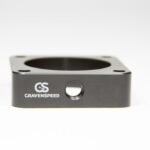The iridescent allure of mood rings captivated many, prompting a whimsical query: what does purple signify in this chromatic kaleidoscope of emotions? Decoding the hues that dance across a mood ring presents a labyrinthine, albeit intriguing, venture. Join us as we delve into the nuances of the color purple and its purported correlation with the emotional spectrum.
The Foundation of Mood Ring Coloration: A Primer
To unravel the enigma of purple, a brief foray into the fundamental principles of mood ring functionality is warranted. These rings are not, in actuality, telemetric devices capable of divining one’s inner emotional turmoil. Rather, they are thermochromic trinkets. These employ liquid crystals that shift color in response to minute temperature fluctuations. Body temperature, albeit subtly, is influenced by physiological reactions associated with various emotional states. Thus, a tenuous, indirect link is forged between emotion and the ring’s color.
Purple: A Multifaceted Hue Within the Emotional Tapestry
Purple, a color steeped in historical and cultural significance, typically surfaces when the mood ring registers a temperature slightly cooler than that associated with “calm” or “relaxed” states (often represented by blue or green). The interpretation of purple, however, is not monolithic. It is susceptible to contextual variance and idiosyncratic emotional experiences. Let’s dissect the various facets of this violet vista:
- Relaxation and Equilibrium: In certain schema, purple denotes a state of relaxed contemplation, bordering on serene tranquility. It suggests an emotional equilibrium, free from the throes of anxiety or agitation. A person exhibiting purple on their mood ring, under this interpretation, is experiencing emotional homeostasis.
- Love and Passion: Another facet of purple suggests infatuation or passionate affection. This posits that the wearer is experiencing amorous sentiments or a burgeoning romantic connection. The increased blood flow associated with arousal may contribute to the slight elevation in temperature reflected in the purple hue.
- Sensitivity and Empathy: Purple can also signify heightened sensitivity or empathetic attunement. The individual may be acutely aware of the emotional landscape of others, experiencing emotions with amplified intensity. Such heightened emotional awareness may trigger subtle physiological responses reflected in the thermochromic reaction.
- Restlessness and Unease: Conversely, some interpretations ascribe a meaning of restlessness or slight unease to purple. This posits that the wearer is experiencing a low level of anxiety or a sense of anticipatory tension. This darker interpretation is often associated with a cooler body temperature than the more positive readings.
- Confusion and Introspection: Purple can also represent a state of perplexity, reflecting a period of inner contemplation or an attempt to reconcile conflicting emotions. The wearer may be grappling with uncertainty or wrestling with complex thoughts. This sense of internal debate can cause the subtle temperature changes that trigger the color shift.
Caveats and Considerations: The Skeptic’s Perspective
While the lore surrounding mood rings provides a fascinating glimpse into the human fascination with emotional self-assessment, it is imperative to approach these interpretations with a modicum of skepticism. Several factors impinge upon the accuracy and reliability of mood rings as accurate emotional barometers:
- Ambient Temperature: The external environment wields significant influence. A frigid room will undoubtedly skew the color towards cooler hues, irrespective of the wearer’s emotional state.
- Individual Physiology: Metabolic rate, circulation efficiency, and skin temperature all differ between individuals. This physiological variability renders universal color interpretations problematic.
- Ring Quality: The quality of the liquid crystals employed in the ring’s construction directly affects its sensitivity and responsiveness. Inferior materials may exhibit erratic or inaccurate color transitions.
- Psychological Influence: The mere act of observing the ring and consciously attempting to correlate color with emotion can introduce a placebo effect, influencing both perception and physiological response.
Beyond the Purple Haze: A Holistic Understanding of Emotion
Ultimately, the true value of a mood ring lies not in its purported ability to divine emotions with scientific precision, but rather in its capacity to stimulate introspection and self-awareness. It serves as a playful, if somewhat rudimentary, tool for prompting individuals to consider their emotional states and engage in mindful reflection. The meanings associated with different colors, including purple, provide a framework for this introspective journey. It is crucial to recognize that human emotion is a multifaceted phenomenon, far exceeding the simplistic representation afforded by a thermochromic trinket. A holistic understanding necessitates acknowledging the interplay of cognitive processes, physiological responses, and contextual factors.
So, while purple on a mood ring might suggest relaxation, passion, sensitivity, unease, or introspection, the true meaning is ultimately subjective and dependent upon a confluence of internal and external variables. Embrace the whimsical nature of the mood ring, but always temper its pronouncements with a healthy dose of critical appraisal.










Leave a Comment